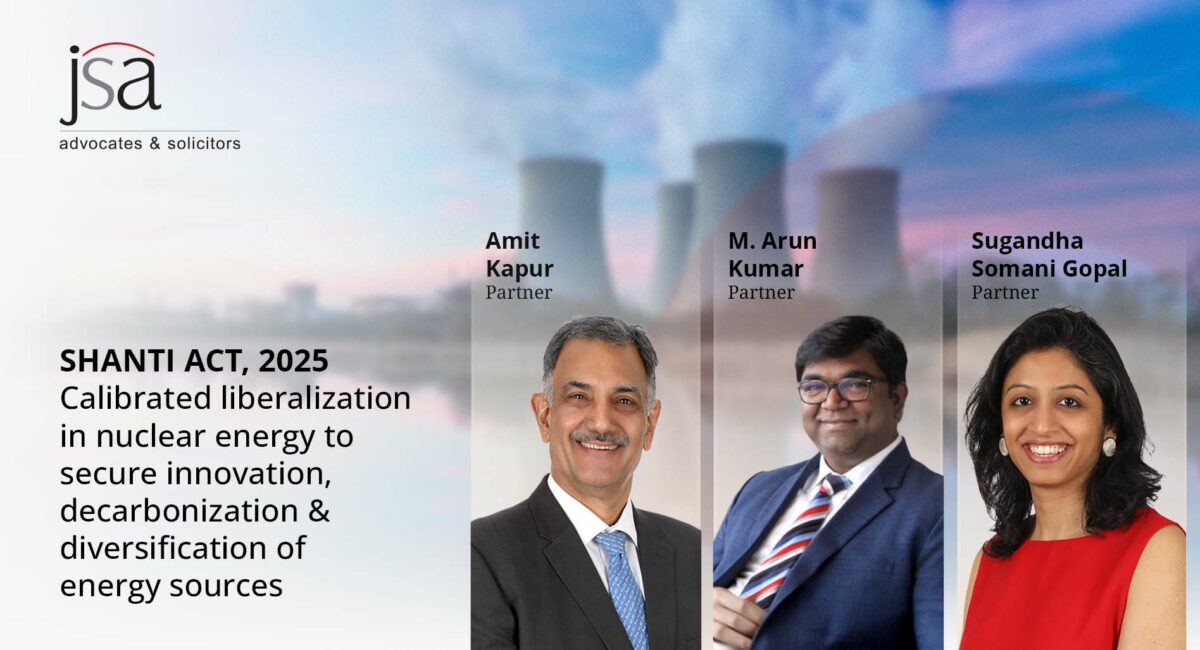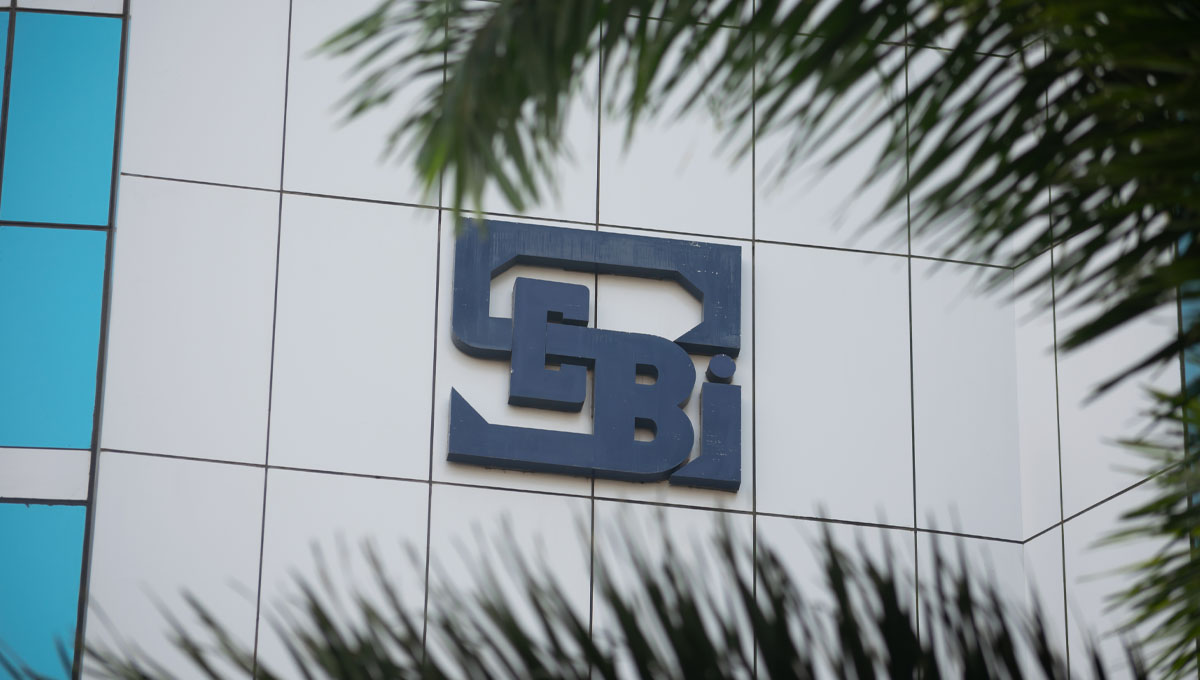Please click here to download the Newsletter as PDF.
This JSA Highways and Logistics Newsletter focuses on key developments undertaken in the Indian roadways and logistics sector between April – June 2025.
National Highways Authority of India releases its asset monetisation strategy document
Pursuant to the announcement made in the Budget for financial year 2025-26 regarding the launch of the second asset monetisation plan for 2025-30, the National Highways Authority of India (“NHAI”) on June 9, 2025 announced its ‘Asset Monetization Strategy for the Road Sector’. The strategy document focuses on 3 (three) key pillars for undertaking road asset monetisation, namely: (a) value maximisation; (b) transparency; and (c) market development.
In terms of value maximisation, the strategy document states that the following steps will be undertaken by NHAI:
- Asset register: Creation of an asset register which will include a list of highway assets that will be attractive to private investors looking to participate in the asset monetisation program. The asset register will include all technical and financial details needed to determine the monetisation potential of the asset.
- Technical field evaluation: Conduct of a 360 degree evaluation of the asset using field investigations to determine the existing quality of the asset, its capacity augmentation requirements (if any), and its revenue potential (with respect to traffic). The field investigations will be done through multiple tools including drone videography, mobile light detection and ranging (LIDAR) surveys, axle load surveys, and network survey vehicles (NSV). Such field investigations will also leverage ‘PM Gati Shakti National Master Plan’ portal for comprehensive evaluation of the asset.
- Transaction valuation: The reserve price of the assets in the register will be determined fairly so as to ensure that the amount derived from each monetised bundle is greater than the bundle’s reserve price, i.e., Initial Estimated Concession Value (“IECV”). Fair valuation of the assets has to be done taking into account risks to revenue and costs associated with the assets. To ensure that the IECV valuation is robust so as to provide fair valuation to NHAI, Cabinet Committee on Economic Affairs (“CCEA”) mandated practice will be followed, using Free Cash Flow to Firm (“FCFF”) method. FCFF method takes into account the following: (a) operating cashflow generated through toll collections and operating expenses for toll collection, security services and routine operation; (b) capital expenditure on routine and major maintenance and repair during contract period. The present value of FCFF is thereafter discounted with the discount rate being determined by the following factors: (i) benchmarking of market return expectations on equity and cash flows for similar assets/projects and market interactions; and (ii) assessing various financing options (term loans, bond issues, etc.) and market rates for the asset.
- Asset categorisation: Upon completion of technical evaluation and traffic estimation of individual assets, these assets will be categorised into various classes based on toll revenue per kilometer (“km”) and toll revenue growth rate with the following categories proposed: (a) highly attractive – assets with high revenue per km and strong growth; (b) moderately attractive – assets with decent revenue per km and steady growth; (c) potentially attractive – assets with lower current revenue per km but high growth potential; and (d) Assets with low revenue per km and have minimal growth.
- Identification of monetisation bundles: Once eligible assets have been shortlisted, they will be pooled together to create bundles that are of sizeable value and attractive to potential investors. It will be ensured that the bundles are balanced with assets with varying revenue per km and revenue growth combined so as to balance immediate returns with future growth potential, making the bundles both more attractive and less risky for investment. Further the bundling will be done in a manner such that the assets in a single bundle will be preferably co-located and are located in geographically favourable regions (such as regions with economic corridors).
In terms of transparency, the following principles will be kept in mind while undertaking asset monetisation:
- Standardisation: NHAI will strive for implementation of standardised processes (both pre and post bidding) across the monetisation value chain so as to streamline operations and ensure consistency and clarity across all transactions. Additionally, in terms of documentation, NHAI will develop standardised templates for all bidding and contractual documents with such documentation including technical documents such as project reports, feasibility studies, cost estimates, and environmental impact assessments.
- Public dissemination: The strategy document specifies that NHAI will ensure that the roll-out of asset bundles is done in fixed manner during the course of a financial year with a periodic cadence. Additionally, at the time of the periodic rollout, public disclosure of the future monetisation pipeline for the upcoming period (generally on an annual basis) will be done to facilitate better planning and preparation among investors. The strategy document states that the IECV of each asset will not be disclosed so as to avoid a situation where there is a concentration of bids around the IECV value. However, to ensure transparency, the assumptions used for estimation of IECV will be shared with potential investors on public platforms.
- Monitoring and performance evaluation: To monitor performance of the assets post monetisation, the NHAI will develop specific Key Performance Indicators (“KPIs”) to measure the performance of the monetised assets and will have a system for regular reporting of asset performance against established KPIs, involving preparation of comprehensive reports to track progress over time. NHAI will also monitor changes in market conditions, regulatory developments, or operational disruptions which affect the asset performance. Finally, inputs from investors will be gathered through investor engagement, pre-bid meetings and market studies.
Finally, in terms of market development and outreach, the strategy document specifies that NHAI will take the following actions:
- preparation of compelling communication material that underlines the socio-economic benefits of investing in road infrastructure, such as job creation, economic growth, and improved connectivity;
- NHAI will increase of participation in industry-related events, like conferences, roadshows, and seminars, both within India and internationally, to present business opportunities in ToT (Toll Operate Transfer)/InvIT (Infrastructure Investment Trust) projects, network with potential investors, and address stakeholder queries; and
- NHAI will partner with entities like investment banks and financial advisors to extend investor outreach, facilitate investment structuring, and gain market insights.
Source: PIB dated June 9, 2025
The strategy document can be accessed HERE
NHAI restricts number of projects per individual engineer representing engineering consultancy firms
Under the various concession agreements entered into by NHAI for various modes of project implementation, including Hybrid Annuity Mode (“HAM”) and Engineering Procurement and Construction (“EPC”), there is a requirement of NHAI to appoint an independent engineer/authority engineer who are responsible for monitoring and supervising the works carried out by the contractors/concessionaire. These engineers are appointed from various engineering consulting firms selected by NHAI through a tendering process. In this regard, on June 10, 2025, NHAI issued a policy circular stating that these engineering consultancy firms can appoint an individual designated engineer for not more than 10 (ten) projects involving construction or maintenance of national highways.
The intent behind bringing in this restriction is to ensure that a single engineer is not overburdened with monitoring and supervision of too many projects with NHAI noting that there is a concern that consultancy firms are appointing a single individual to act as an engineer for a high number of projects.
Source: Policy Circular dated June 10, 2025
NHAI revives Build Operate Transfer (Toll) projects with signing of 2 (two) concession agreements
Over the last financial year, NHAI had stated from time to time that it will be seeking to revive Build Operate Transfer (“BOT”) (Toll) projects so as to reduce the financial burden of NHAI. In this regard, the first quarter of the financial year witnessed the signing of concession agreements by NHAI for the following BOT (Toll) projects:
- 88 (eighty-eight) km long 6 (six) lane Agra-Gwalior Greenfield Expressway (NH-719D): On April 30, 2025, NHAI signed a concession agreement for the implementation of the Agra-Gwalior Greenfield Expressway (NH-719D). The Agra-Gwalior Greenfield Expressway will start from Deori village in Agra and terminate at Susera village in Gwalior. The project will be developed at a total capital cost, including land acquisition cost, of INR 4,613 crore (Indian Rupees four thousand six hundred and thirteen crore). The concession period is for 20 (twenty) years, including construction period of 30 (thirty) months. The authority will provide construction support of INR 820 crore (Indian Rupees eight hundred and twenty crore) to the concessionaire during the construction period, which will be linked to the project progress. This project was awarded to the concessionaire on quoted 17.17 % premium in the form of revenue share of the realisable fee against expected premium of 2.42%. The premium will be payable from the second year post project completion and thereafter be increased by 1% of the realisable fee every year in subsequent years of the concession period.
- 121 (one hundred and twenty-one) km Guwahati Ring Road Project: On April 3, 2025, the NHAI signed a concession agreement for the development of the Guwahati Ring Road project on BOT (Toll) basis. The highway stretch is 121 (one hundred and twenty-one) km long and will be developed at a total cost of INR 5,729 crore (Indian Rupees five thousand seven hundred and twenty-nine crore) with zero grant from the government. The concession period will be for 30 (thirty) years, including construction period of 4 (four) years. To provide further financial support, the Government of Assam will bear 50% of the land cost, provide exemption from royalty on aggregates and State portion of the goods and services tax (GST) thereby contributing about INR 1,270 crore (Indian Rupees one thousand two hundred and seventy crore). The project will have 3 (three) sections including 56 (fifty-six) km long 4 (four) lane access-controlled Northern Guwahati Bypass, widening of the existing 8 (eight) km bypass on NH 27 from 4 (four) lanes to 6 (six) lanes, and improvement of existing 58 (fifty-eight) km long bypass on NH 27.
Source: PIB dated April 30, 2025, PIB dated April 3, 2025
Ministry of Roads Transport and Highways notifies revisions to fee charges under toll notification
The Ministry of Roads Transport and Highways (“MoRTH”) on June 17, 2025 issued a notification amending the National Highways Fee (Determination of Rates and Collection) Rules, 2008, permitting a person owning a vehicle registered for non-commercial purpose, having a valid and functional Fastag, to obtain a pass on payment of a fee of INR 3,000 (Indian Rupees three thousand). This pass will be valid for 1 (one) year or for 200 (two hundred) crossings, whichever is earlier. The pass can be used through any fee plaza of a national highway, irrespective of the fee leviable at each fee plaza. This fee will be revised annually with effect from the April 1st of every year. The above notification will become effective from August 15, 2025.
Furthermore, MoRTH issued another notification dated July 1, 2025 making further amendments to Rule 4 (10) of the National Highways Fee (Determination of Rates and Collection) Rules, 2008 wherein the methodology of calculating the rate of fee for national highways comprising of ‘structures’ has been amended. The amendments have been summarised below:
| Rule 4 (10) prior to amendment of July 1 | Rule 4 (10) post amendment of July 1 |
| The rate of fee for use of standalone structure to be calculated by converting the cost of the structure into an equivalent length of highway by dividing by an equalisation factor equal to average cost per km of highways on April 1st of that year. | Rate of fees applicable will be calculated by adding 10 (ten) times the length of structure/s, to the length of the section of national highway excluding the length of structure or structures OR 5 times the total length of section of national highway, whichever is lesser. |
| Stand-alone structure defined to mean an independent bridge or tunnel or flyover taken up as specific project to complement an existing facility or to create a new facility for users which brings about tangible benefits in terms of savings in time and vehicle operating costs and enhances the efficiency of the existing road network | Structure defined to mean an independent bridge, tunnel or flyover or elevated highway.
|
| For a permanent bridge or a tunnel forming part of the highway/expressway, the rate of fee will be calculated by converting the cost of the structure, excluding the length of the approaches to the structure. | The calculation of fee will not apply to any structure if the length of such structure is 60 meters or less and it will be considered as part of normal length of the section of national highway. |
The above notification of July 1, 2025, will come into effect from:
- in the case of existing public funded fee plazas, from the date of next scheduled user fee revision;
- for concessionaire operated fee plazas, upon expiry of concession agreements or transfer back to the executive authority; and
- for the newly operated fee plazas, from the date of commencement of toll operations.
Source: Notification dated June 17, 2025; Notification dated July 1, 2025
Cabinet approves several new road projects on HAM and Design Build Finance Operate Transfer basis
During the previous quarter it was announced that the Union Cabinet has approved several highway projects which will be implemented through Public Private Partnership (“PPP”) either on HAM or Design Build Finance Operate Transfer (“DBFOT”) basis. These projects are as follows:
- the CCEA on April 30, 2025, approved the proposal for development of 4 (four) lane greenfield access controlled 166.80 (one hundred and sixty-six point eight zero) km of NH 06 from Mawlyngkhung (near Shillong) in Meghalaya to Panchgram (near Silchar) in Assam on HAM at a total capital cost of INR 22,864 crore (Indian Rupees twenty two thousand eight hundred and sixty-four crore). The total civil cost of this project will be INR 12,087 crore (Indian Rupees twelve thousand and eighty-seven crore) and the land acquisition cost is estimated to be INR 3,503 crore (Indian Rupees three thousand five hundred and three crore); and
- the CCEA on April 9, 2025 approved the construction of 6 (six) lane Zirakpur Bypass starting from junction with NH-7 (Zirakpur-Patiala) and ending at junction with NH-5 (Zirakpur-Parwanoo) with a total length 19.2 (nineteen point two)km in Punjab and Haryana under NH(O) on HAM. The total capital cost of the project is estimated to be approximately INR 1,878 crore (Indian Rupees one thousand eight hundred and seventy-eight Crore).
- the CCEA on May 28, 2025 approved the construction of 4 (four) lane Badvel-Nellore Corridor with a length of 108.134 (one hundred and eight point one three four) km at an approximate cost of INR 3,653 crore (Indian Rupees three thousand six hundred and fifty-three crore) in the state of Andhra Pradesh on NH (67) on DBFOT mode. It is expected that the project will provide connectivity to important nodes in the 3 (three) industrial corridors of Andhra Pradesh, i.e., Kopparthy Node on the Vishakhapatnam-Chennai Industrial Corridor, Orvakal Node on Hyderabad-Bengaluru Industrial Corridor and Krishnapatnam Node on Chennai-Bengaluru Industrial Corridor.
Source: PIB Release dated April 30, 2025; PIB Release dated April 9, 2025; PIB Release dated May 28, 2025
MoRTH issues guidelines to expedite land acquisition proceedings under the National Highways Act
The acquisition of land for highway projects in India is governed by the National Highways Act, 1956 (“NH Act”). Under the NH Act, there is a step-by-step process which has to be followed which is broadly as provided below:
Step 1: Under Section 3A of the NH Act, the Government of India (“GoI”) will issue a notification in the official gazette declaring its intention to acquire a parcel of land for national highway development. As per Section 3C of the NH Act, a 21 (twenty-one) day period is thereafter provided for persons to object to the use of the land parcel for highway development.
Step 2A: As specified in Section 3D of the NH Act, where no objection is made under Section 3C of the NH Act or where the GoI disallows an objection, the competent authority of the GoI has to submit a report to the GoI and on receipt of such report, the GoI then declares, by notification in the official gazette, that the land should be acquired and upon such notification, the land vests with the GoI, free from all encumbrances.
Step 2B: As per Section 3G of the NH Act, along with the acquisition of land, the GoI will award compensation to the landowners or persons having right of enjoyment over the land. The amount is determined by the competent authority of the GoI. Post declaration, subject to any objections or arbitration, the amount is deposited with the GoI which then releases the compensation to the landowner/right holders as per Section 3H of the NH Act.
Step 3: As per Section 3E of the NH Act, once the land vests with the GoI and the amount of compensation has been deposited with the GoI, the competent authority directs the owner or any other person who may be in possession of the land to surrender the land to the GoI within 60 (sixty) days of the notice.
Keeping this above process in mind, the MoRTH has realised that for PPP projects, contractors have faced situations where Right of Way (“ROW”) over land has not been made available even where concession agreements have been signed or Letter of Award (“LOA”) has been issued. Therefore, to streamline the land acquisition process under the NH Act, MoRTH has issued a circular dated May 6, 2025, stating the following:
- the notification under Section 3A of the NH Act declaring intention to acquire a parcel of land has to be issued within 60 (sixty) days from highway alignment being approved by the NHAI;
- 90% of the ROW should be in place before the notification is issued by GoI that the land should be acquired under Section 3D of the NH Act;
- compensation for 90% of the ROW length should be awarded by competent authority prior to issuance of the LOA to the concessionaire/contractor; and
- Possession of 90% of the ROW length has to be delivered after declaration of compensation by competent authority under Section 3G of the NH Act and this delivery of possession of the land comprising 90% of the ROW has to take place before the ‘Appointed Date’ in the concession agreement.
Further, the aforesaid circular states that environmental clearance, wildlife clearance, utility shifting estimates have to be obtained before receipt of the bids and the forest clearance has to be obtained prior to issuance of letter of award to concessionaire.
Source: MoRTH Circular dated May 6, 2025
NHAI issues amendments to the dispute resolution provision of standard agreement for EPC projects
In relation to the model agreement for EPC projects, NHAI, vide policy circular dated May 2, 2025, has issued an amendment to the dispute resolution clause of the standard agreements for EPC projects, Performance-Based Maintenance Contracts (“PBMC”) and item rate contracts. As per the prevailing dispute resolution provision, at the first instance either party may call upon the authority engineer, to mediate and assist in arriving at an amicable settlement. If the dispute continues, dispute may be referred to the Dispute Resolution Board (“DRB”) by either party. However, NHAI has now noted that for projects where the project cost INR 300 crore (Indian Rupees three hundred crore) or less, constituting the DRB is not feasible. Hence, it has decided that for projects where the project cost is INR 300 crore (Indian Rupees three hundred crore) or less, the sub-clause mandating referral of the dispute to the DRB will be deleted.
Source: NHAI Policy Circular dated May 2, 2025
NHAI issues modification to the Standard Operating Procedures issued for taking over completed project highways
NHAI, vide policy circular dated April 5, 2025, has issued a modification to the Standard Operating Procedures (“SOPs”) to be followed during the takeover of a project highway after completion of the concession period and which were originally issued on October 1, 2022. As per the original set of SOPs, in addition to verification of the project assets, records, ‘as built’ drawings, applicable permits and other documents by the independent engineer/authority engineer at the time of taking over, a team from NHAI is required to inspect the project highway and submit a report at least 3 (three) months prior to the likely taking over date. As per the modifications proposed the timeline for providing this report by the NHAI has been brough forward with the requirement of submitting this report now being prescribed to at least 6 (six) months prior to the likely taking over date.
The original circular of October 1, 2022, specified that the independent engineer/authority engineer concerned will submit an estimate/bidding documents at least 6 (six) months prior to the date of taking over so that relevant departments of NHAI headquarters can complete the subsequent procurement process and keep the agencies ready for operations and maintenance/capacity augmentation/tolling of the project highway well before the taking over date. The circular of April 5, 2025, further clarifies that along with the estimate/bidding documents, defect notices (issued during the course of inspection prior to take over) and proposals for having a Performance Based Maintenance Contract (PBMC) or Short Term Maintenance Contract (STMC) for highway stretches where the defect liability period (DLP)/concession period is scheduled to expire will also be submitted.
Source: NHAI Circular dated April 5, 2025
NHAI releases policy guidelines for deployment and replacement of key personnel of consultant
Taking into cognizance the fact that there have been several cases of inadequate deployment of key personnel by consultant in many projects, NHAI, vide policy circular dated May 29, 2025, has stated that if the resume of the identified key personnel (as identified during the tender stage) is recommended by Regional Officer (RO) to Headquarter of NHAI for approval then that proposed key personnel can be immediately mobilised at the project site, subject to confirmation through interaction by constituted NHAI Expert Committee (for interaction with key personnel). In case, the key personnel is not recommended by the NHAI Expert Committee, he/she may be immediately demobilised from the project site and proper replacement may be made within 15 (fifteen) days.
Source: NHAI Policy Circular dated May 29, 2025
MoRTH issues circular regarding additional performance security from bidders with abnormally low financial bids
MoRTH, vide policy circular dated April 30, 2025, has revised the quantum of additional performance security to be obtained from bidders who have quoted abnormally low bids in relation to the request for proposal (RFP) issued for EPC projects of NHAI. As per the circular:
- Where the bid price quoted by the bidder is below 10% but not below 20% of the project cost specified in the tender, the additional performance security percentage will be incremented by 0.1 % for every percentage of bid price below 10% of the project cost (starting at 11%) with the additional bid performance security being 0.1 % and this additional performance guarantee percentage will be applied on the bid price. For the purpose of illustration, if the price quoted by bidder is INR 890 crore (Indian Rupees eight hundred and ninety crore) (which is 11% below the estimated project cost), an additional performance security will be furnished by the bidder which will be computed at 0.1% of the INR 890 crore (Indian Rupees eight hundred and ninety crore) i.e., INR 89,00,000 (Indian Rupees eighty-nine lakh). This additional performance security will be over and above the performance security which has to be submitted by the bidder;
- Where the bid price is 20% or more below the project cost specified in the tender document, the additional performance guarantee percentage will be incremented by 0.2% for every percentage of bid price below 20% of the project cost in addition to 1% of the bid price and this additional performance guarantee percentage will be applied on the bid price.
Source: MoRTH Circular dated April 30, 2025
NHAI issues clarification on SOPs for dispute resolution through DRB
NHAI, vide policy circular dated June 12, 2025, issued a clarification to the SOP in place for dispute resolution through DRB. As per the circular, the NHAI has noted that several concessionaires have been submitting requests for conciliation even when the dispute is under adjudication before DRB and that this is not in compliance with the procedure under the SOPs. Therefore, NHAI has clarified that it will not accept any request for conciliation from the concessionaire unless the dispute has been first decided by the DRB and/or if DRB is unable to resolve the dispute.
As per the SOPs, in case of a dispute under the concession agreement, at the first instance either party may call upon the authority/independent engineer, to mediate and assist in arriving at an amicable settlement. If the dispute continues, dispute may be referred to DRB by either party. Only if either party is dissatisfied with the decision of DRB, or if DRB is unable to resolve the dispute, the parties are required to explore conciliation and if the conciliation process fails, then the parties may proceed for arbitration.
Source: NHAI Policy Circular dated June 12, 2025
NHAI announces measures for national highway management during monsoon
Ahead of the onset of the monsoon season, the NHAI has announced that it is taking a multi-pronged approach to highway management. NHAI has stated that it has launched a 15 (fifteen) day drive wherein NHAI officials, contractors and consultants are inspecting various stretches to identify critical areas which are prone to damage or are likely to be affected with waterlogging or landslides to ensure free flow of water passage through structures like bridges and culverts on national highways.
Additionally, NHAI has been engaged in cleaning and desilting rainwater harvesting structures, repairing potholes on diversions/slip roads and main carriageways, desilting culverts cross drains and clean reinforced earth (RE) wall weep holes and drainage in the areas with history of flooding and water logging. Emergency equipment and material like excavators, sandbags, and signage are being mobilised at various waterlogging prone sites to enable connectivity and provide safe & smooth movement of traffic during the monsoon rain.
Source: NHAI Press Release dated June 23, 2025
MoRTH notifies the Cashless Treatment of Road Accident Victims Scheme, 2025 and guidelines
MoRTH on May 5, 2025, notified the Cashless Treatment of Road Accident Victims Scheme, 2025 pursuant to Section 162 read with Section 215 (4) of the Motor Vehicles Act, 1988. As per the notification, any person being a victim of road accident arising out of the use of motor vehicle i.e., the victim, occurring on any road, will be entitled to cashless treatment in accordance with the scheme’s procedures. The victim will be entitled to cashless treatment at any designated hospital for an amount up to INR 1,50,000 (Indian Rupees one lakh fifty thousand) per victim for a maximum period of 7 (seven) days from the date of such accident. It has been clarified that the treatment under this scheme at a hospital other than a designated hospital will be for stabilisation purposes only. The State Road Safety Council will be the nodal agency for implementation of the scheme for that State or Union Territory although the State Government may specify, with the prior approval of the GoI, any other entity to be the nodal agency.
Upon hospitalisation, the designated hospital will commence and administer medical treatment to the victim immediately on the victim being brought to the hospital, on cashless basis, and the medical treatment under the scheme will be administered through treatment packages.
The detailed implementation of the scheme has been set out in the guidelines which have been separately issued by MoRTH on June 4, 2025.
Source: Notification dated May 5, 2025
Guidelines for the scheme can be accessed HERE
This Newsletter has been prepared by:
|
Vishnu Sudarsan |

Ashish Suman |

Kartikeya GS |
Ayan Sinha |
For more details, please contact [email protected]












